Prior to 1849 the Lambourn Workhouse stood on the site of Stork House and Stables. The last mention of a Workhouse in Lambourn was in February 1848 when Mr Hoare was in charge, but after that date any unfortunate inmates remaining in the Workhouse were removed to a larger building in Hungerford, and there then commenced a period when the site was transformed into a comfortable residence, Stork House, and successful stables.
1855-1858 Edwin Parr
Edwin Parr, born in Caversham in 1813, was baptised on 14th January 1813, and became a stockman and racehorse trainer to some of the most prominent racehorse owners of their generation, including Lord St Vincent and George Osbaldeston, was a controversial character. There is no doubt that he possessed incredible training skills, but his money management and failure to pay simple bills meant that he accepted insolvency, was in court all too often, and suffered bankruptcy in the mid-1860s. He was certainly training in Lambourn by 1846, having built Parrs House and stables in that year, although by that stage of his career he was not winning high-profile races. Yet he was courting the wrong publicity. In 1851 he wrote to The Era complaining of a boy jockey he had used named Rickards, who had not carried out his orders as requested and had failed to win a race at Goodwood. In the newspaper he advised other trainers not to use Rickards in the future, potentially ruining the boys riding career. The Goodwood Stewards met and decided that Edwin Parr was unjustified in writing the comments, and that other trainers should guard against staining the characters of other apprentices. Parr had to write a letter of apology in The Era, acknowledging that it was wrong for him to publicly criticize a boy who was not 'bound to him.' In his early training years in Lambourn he was in charge of a number of horses owned by the renowned sportsman and racing character, George Osbaldeston, who was still riding in public aboard some of the Parr trained horses in 1855 when George was aged 69. Four particular horses of note owned by Osbaldeston in 1852 were Sylphine, Provost Marshall, John of Berwick and Mountain Deer, the first two of which had entries in the 1852 St Leger, although they did not subsequently take up their entries in a race won by Stockwell (SR 2063). At a meeting at Stockbridge, organized by the Bibury Club, John of Berwick, owned by Parr, won the Bibury Stakes and Free Handicap on the same day, the last of which was ridden by George Osbaldeston in his green silks and white cap at the age of 66. Mountain Deer won the Cheshire Stakes at Chester, the Claret Stakes at Newmarket, and one of Her Majesty's Plates for 100 Guineas at Lancaster.
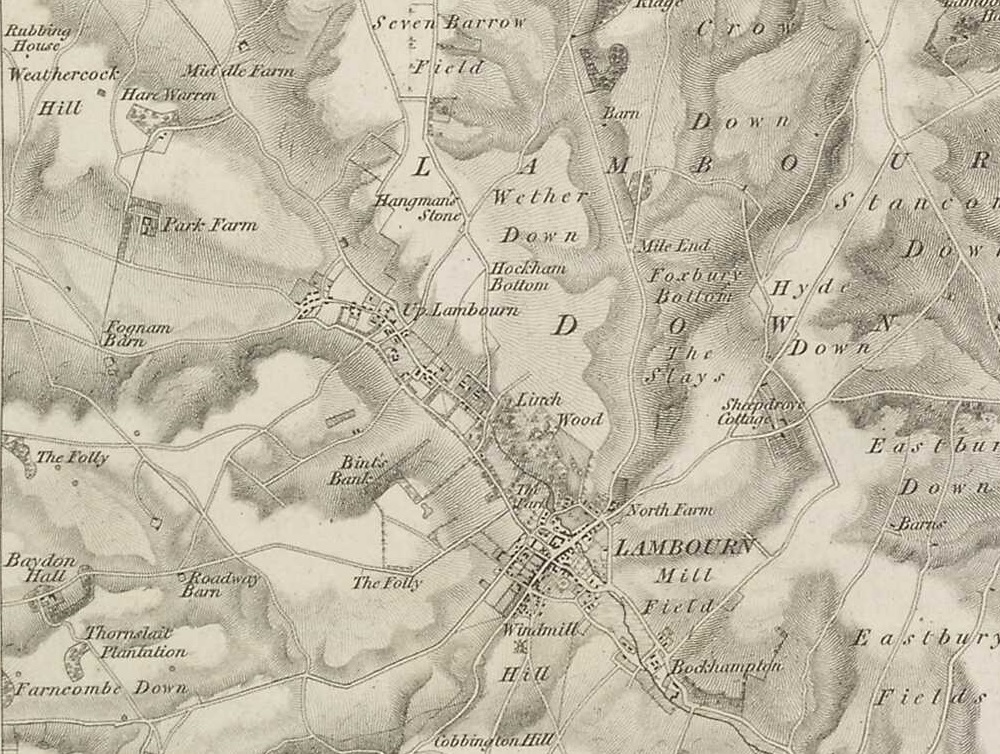
Despite not running in the St Leger, Sylphine, who was runner-up in the Woodcote Stakes at Epsom behind Orestes, won the Lavant Stakes at Goodwood and both the Mersey Stakes and Great Lancashire Produce Stakes at Aintree. Parr trained for wealthy owners, but also trained many of his own horses, notably Sanita who won the 1852 Chester Handicap and Claret Stakes at Brighton. Throughout his career Parr was plagued by Court appearances; in 1852 the principal action against him was from a past employee, Tubbs, who acted as head stable-keeper, horse keeper and groom at Parr's Lambourn stables, but was not paid for 13 months and, in June 1852, had to take Parr to Court. Parr had taken Tubbs with him to Chester races where they had enjoyed some success, so he offered Tubbs employment. When Parr went to Ascot races Tubbs took charge of the stable for a prolonged period and engaged his nephew to ride out.
A dispute arose between Parr and the boy about his work and he was fired, which caused Parr and Tubbs to argue and, subsequently led to the dismissal of Tubbs, who was denied the pay he was due for 13 months work. In the end the Court believed Tubbs and found against Parr.
There is little doubt that Edwin Parr cherished his time in Lambourn, and he was already planning his next development, Stork House, for in 1853 he owned a brown foal by Gabbler out of Mystery which he named Stork, and in 1854 a chestnut foal by Loup Garou out of a Pantaloon mare which he named Lambourn.. Both enjoyed success on the racecourse, with Stork carrying Parr's brown silks with white cap to victory in no less than 11 races in 1855, including the Alma Stakes, Wirral Stakes and St Helens Purse at Chester, the Wrottesley Stakes at Wolverhampton and the Golborne Stakes at Newton-le-Willows racecourse which ultimately was replaced by Haydock Park at the turn of the century. Once again, despite obvious successes on the track, Parr was summonsed to Court off the track. In a case of Parr v Hamblin, a Lambourn builder named Hamblin had to go to Court to get the payment of £128 he was owed for work down at Stork House. In the end Parr did not even defend the case and Hamblin was awarded the money, with Parr given 14 days to pay.
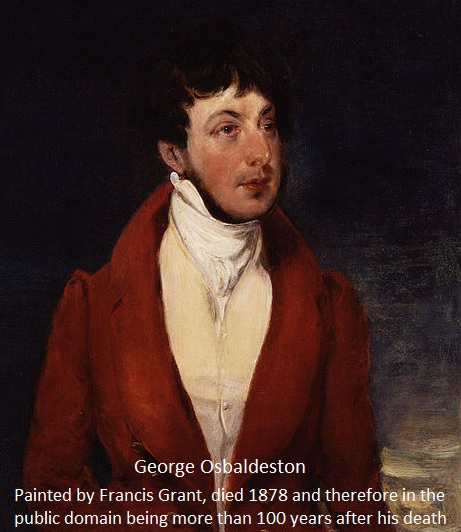
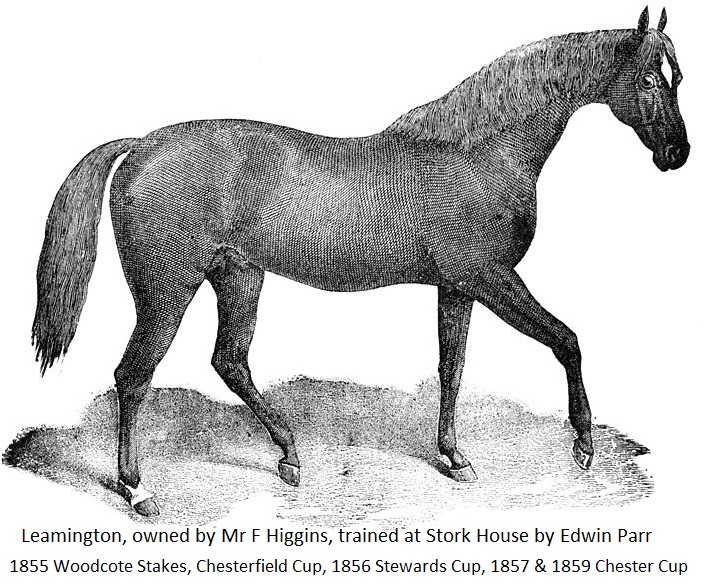
The newspapers were full of praise for Parr over his Chester Cup success, and the village of Lambourn celebrated in style. In an article headed 'Grand Celebration of the winner of the Chester Cup' The Era newspaper wrote, 'On Wednesday last, the village of Lambourn, whose celebrated Downs are the Scenes of coursing meetings and the training of racers, exhibited a festive gathering of greater magnitude than any that has been witnessed for very many years. The event which occasioned this demonstration was the triumph of the now-famed horse Leamington, the property of Edwin Parr, who carried off the Chester Cup, beating Mr Howard's Drumour by a neck, and Lord Ribblesdale's Dulcamara by a length. Mr Parr, in the true spirit of philanthropy, determined that the residents of the neighbourhood, including the labouring classes, should partake of the pleasures of his triumph, and accordingly threw open the doors of his beautiful residence, Stork House, surrounded with its lawns and gardens; the invitations amounted to no less than 1500, the whole party being suitably seated and treated to a substantial old English dinner party, with plenty of strong ale. So large a dinner party has never been recorded in the annals of Lambourn, with the Wantage Band playing well into the night when the grounds were thrown open to the entire inhabitants of the town, young ladies and gentlemen dancing lively to the inspiriting airs of the band.' It does seem amazing that Edwin Parr could be so generous on the one hand, but so short-sighted about paying necessary bills on the other and having to be taken to court to do so.
1852 Chester Handicap SANITA (5/1) owned and trained by Edwin Parr and ridden by Edwin Hiett
1852 Cheshire Stakes at Chester MOUNTAIN DEER (6/4) owned by George Osbaldeston, trained by Edwin Parr and ridden by Edwin Hiett
1852 Claret Stakes at Newmarket MOUNTAIN DEER (6/4) owned by George Osbaldeston, trained by Edwin Parr and ridden by Edwin Hiett
1852 Bibury Stakes at Stockbridge JOHN OF BERWICK (4/7 fav) owned and trained by Edwin Parr and ridden by George Osbaldeston
1852 Free Handicap at Stockbridge JOHN OF BERWICK (9/1) owned and trained by Edwin Parr and ridden by George Osbaldeston
1852 Fourth Triennial Stakes at Stockbridge SYLPHINE (6/1) owned by George Osbaldeston, trained by Edwin Parr and ridden by Edwin Hiett
1952 Her Majesty's 100 Guineas Plate at Lancaster MOUNTAIN DEER (4/5 fav) owned by George Osbaldeston, trained by Edwin Parr and ridden by Edwin Hiett
1852 Mersey Stakes at Aintree SYLPHINE (4/7 fav) owned by George Osbaldeston, trained by Edwin Parr and ridden by Edwin Hiett
1852 Great Lancashire Produce Stakes at Aintree SYLPHINE (Evens fav) owned by George Osbaldeston, trained by Edwin Parr and ridden by Edwin Hiett
1852 Lavant Stakes at Goodwood SYLPHINE (5/4 fav) owned by George Osbaldeston, trained by Edwin Parr and ridden by Edwin Hiett
1852 Claret Stakes at Brighton SANITA (10/1) owned and trained by Edwin Parr and ridden by George Osbaldeston
1855 Woodcote Stakes at Warwick LEAMINGTON (4/5 fav) owned by Mr Halford, trained by Edwin Parr and ridden by Kendall
1855 Chesterfield Stakes at Derby LEAMINGTON (8/1) owned by Mr Halford, trained by Edwin Prr and ridden by Wells
1855 Golborne Park Stakes at Newton STORK (4/7 fav) owned and trained by Edwin Parr and ridden by Marlow
1855 Warwick Stakes STORK (10/1) owned and trained by Edwin Parr and ridden by John Quinton
1855 Wirral Stakes at Chester STORK (5/2) owned and trained by Edwin Parr and ridden by John Quinton
1855 Chillington Stakes at Wolverhampton STORK (6/4) owned and trained by Edwin Parr and ridden by John Quinton
1855 St Helens Purse at Newton STORK (2/1) owned and trained by Edwin Parr and ridden by John Quinton
1855 Worcester Stakes at Worcester STORK (4/5 fav) owned and trained by Edwin Parr and ridden by John Quinton
1855 Lyme Park Stakes at Newton STORK (2/1) owned and trained by Edwin Parr and ridden by Aldcroft
1855 Wrottesley Stakes at Wolverhampton STORK (3/1) owned and trained by Edwin Parr and ridden by John Quinton
1855 Doncaster Sweepstake STORK (3/1) owned and trained by Edwin Parr and ridden by John Quinton
1855 Avon Stakes at Warwick STORK (1/4 fav) owned and trained by Edwin Parr and ridden by John Quinton
1855 Alma Stakes at Chester STORK (Evens fav) owned and trained by Edwin Parr and ridden by John Quinton
1856 Fourth Biennial Stakes at Bath STORK (3/1) owned and trained by Edwin Parr and ridden by Wells
1856 Wrottesley Stakes at Wolverhampton LEAMINGTON (10/1) owned and trained by Edwin Parr and ridden by Sopp
1856 Stewards Cup at Shrewsbury LEAMINGTON (5/2 fav) owned and trained by Edwin Parr and ridden by Sopp
1856 Fifth Biennial Stakes at Bath LAMBOURN (1/2 fav) owned and trained by Edwin Parr and ridden by Wells
1857 Goodwood Stakes LEAMINGTON (100/3) owned by F Higgins, trained by Edwin Parr and ridden by Aldcroft
1857 Tradesmens Cup at Chester LEAMINGTON (5/1) owned and trained by Edwin Parr and ridden by D Hughes
Colonel Charles Townley, born in 1803, son of Peregrine and Charlotte, married into a racing family when he wed Lady Caroline Molyneux, daughter of the 2nd Earl of Sefton, William Molyneux. He developed a passion for horse racing and achieved his ultimate ambition in 1861 when Kettledrum won the Epsom Derby. In his two-year-old career the horse was trained in the north in George Oates' stable in Middleham, but it was felt that a campaign in the south of the country, in preparation for a tilt at the Derby, was the best policy, so his trainer George Oates took him south to be based at Stork House stables in Lambourn where John Prince trained at the time. In 1861 Colonel Townley had an impressive stable of horses, winning the Newcastle Gold Cup, Northern Metropolitan Handicap and Liverpool Cup with Doefoot. Yorkminster won one of Her Majesty's Plates at Aintree and lined up in the Derby, while Imperatrice won Hopeful Stakes at both Newmarket and Doncaster, but it was Kettledrum who was the stable star performer. He ran a creditable second in the 2000 Guineas, his run being blocked at a crucial moment, when beaten 3 lengths by the unfancied 25/1 shot Diophantus (SR 1942). At Epsom he went off at 16/1, although this was reported as 12/1 in some papers, so his excellent show in the Guineas was not considered a particularly strong enough form line to warrant a place nearer the top of the market. Colonel Townley also had Yorkminster (40/1) ridden by James Snowden in the race.
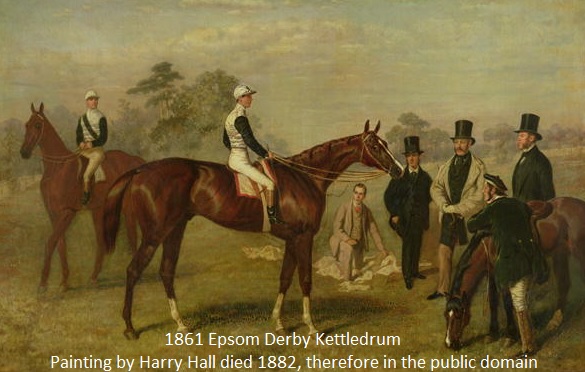
The Derby was run on Wednesday 29th May 1861 and the winner, Kettledrum, carried Colonel Townley's colours of white body, black sleeves and white cap, was trained by George Oates, ridden by Ralph Bullock and bred by Mr James Cookson. There were 18 runners from an initial entry of 236. The winner won by a length in 2 mins 45 secs, with a head between second and third. Kettledrum won a first prize of £6,350, (The equivalent of £718,600 in today's terms based on Bank of England inflation calculator). The next time Kettledrum appeared was in the Doncaster St Leger when he went off the 6/4 fav but was beaten a head by the 1000/15 outsider Caller Ou (SR 1892). Keen to show his well-being, Oates ran him in the Doncaster Cup two days later when he dead-heated with Oaks winner Brown Duchess and, in those days there was usually a run-off between the horses which dead-heated, but the owner of Brown Duchess declined, so Kettledrum was allowed to walk-over to claim the Doncaster Cup. In his final race, the Select Stakes at Newmarket, he was unopposed and walked-over to claim the Stakes. George Oates left Stork House stables after Kettledrum's final race, leaving John Prince to train there alone for a further 5 years, but returned to train at Seven Barrows in August 1862.
1861 Epsom Derby KETTLEDRUM (SR 2048) (16/1) owned by Colonel Charles Townley, bred by James Cookson, trained by George Oates and ridden by Ralph Bullock
1861 Doncaster Cup KETTLEDRUM (5/1) owned by Colonel Charles Townley, bred by James Cookson, trained by George Oates and ridden by Ralph Bullock
1861 Gold Cup Stakes at Newcastle DOEFOOT (5/4 fav) owned by Colonel Townley, trained by George Oates and ridden by James Snowden
1861 Liverpool Cup at Aintree DOEFOOT (9/2) owned by Colonel Townley, trained by George Oates and ridden by James Snowden
1861 Northern Metropolitan Handicap at Manchester DOEFOOT (4/7 fav) owned by Colonel Townley, trained by George Oates and ridden by Hardcastle
1861 Hopeful Stakes at Doncaster IMPERATRICE (10/1) owned by Colonel Townley, trained by George Oates and ridden by James Snowden
1861 Hopeful Stakes at Newmarket IMPERATRICE (Evens fav) owned by Colonel Townley, trained by George Oates and ridden by James Snowden
1861 Mowbray Stakes at Thirsk REPARTEE (2/1) owned by Colonel Townley, trained by George Oates and ridden by James Snowden
1861 Stand Stakes at Doncaster WHITEWELL (3/1) owned by Colonel Townley, trained by George Oates and ridden by James Snowden
1861 Her Majesty's Plate at Aintree YORKMINSTER (1/5 fav) owned by Colonel Townley, trained by George Oates and ridden by James Snowden
1861 Select Stakes at Newmarket KETTLEDRUM walked over
1859-1866 John Prince
John Prince was a much-travelled trainer who worked for some of the top owners of his time, including the Duke of Portland and James Merry. In 1852 James Merry, a Glaswegian, moved his string of horses from Gullane, Scotland to be trained at Woodyates by William Day. The association was brief, for shortly afterwards he installed John Prince as his private trainer when he leased Russley Park Stables on the outskirts of Lambourn. Merry then moved Prince to Parrs House Stables, expanded his string in 1857, purchasing most of Lord John Scott's horses and invited Matt Dawson to help John Prince manage the additional horses. Matt Dawson took full charge in 1859 when John Prince resigned, and he remained in charge until moving to Newmarket in the late 1860s where he achieved unparalled success. In the meantime, John Prince moved to Stork House Stables in 1859 having landed the St Leger, Goodwood Cup, Gimcrack Stakes and Coronation Stakes the year before for James Merry, He replaced Edwin Parr who had taken up a new post as personal trainer to Lord St Vincent. John Prince supplied a steady flow of winners each year during his 8 years at Stork House, but was seldom victorious in high-profile races. One of his top owners was Captain Coates for whom he won the Glasgow Plate at Epsom, the Borough Members Plate at Ascot, and Her Majesty's 100 Guineas Plate at Chelmsford, while his best year was 1862 when he had a string of 24, winning a dozen races. In 1866 he was replaced at Stork House by Fred Bates.
1862 Glasgow Plate at Epsom HESPER (10/1) owned by Captain Coates, trained by John Prince and ridden by J Snowden
1862 Goodwood Sweepstakes HESPER (4/6 fav) owned by Mr Thellusson, trained by John Prince and ridden by George Fordham
1862 Newmarket Sweepstakes HESPER (7/4 fav) owned by Mr Thellusson, trained by John Prince and ridden by Bullock
1862 Newmarket Sweepstakes HESPER (1/3 fav) owned by Mr Thellusson, trained by John Prince and ridden by George Fordham
1862 Newmarket Sweepstakes HESPER (6/4 fav) owned by Mr Thellusson, trained by John Prince and ridden by George Fordham
1862 Shrewsbury Handicap HESPER (3/1) owned by Lord Stamford, trained by John Prince and ridden by A Edwards
1862 Borough Members Plate at Ascot LIBELLOUS (4/5 fav) owned by Captain Coates, trained by John Prince and ridden by George Fordham
1862 Warwick Trial Stakes LIBELLOUS (3/1) owned by Mr Hodgman, trained by John Prince and ridden by George Fordham
1862 Newmarket Handicap CONQUEROR (6/1) owned by Captain Coates, trained by John Prince and ridden by Challoner
1862 Her Majesty's 100 Guineas Plate at Chelmsford FLIRTATION (13/8 fav) owned by Captain Coates, trained by John Prince and ridden by George Fordham
1866-1872 Fred Bates
Frederick Bates, born in Nottingham in August 1840, was born into a horse loving family, his father kept a livery stable, so it was no surprise that he joined a racing stable after completing his education. He became apprentice to Tom Dawson at Tupgill stables, Middleham and married Tom's daughter, the marriage being blessed with a son, Harry Dawson Bates who followed his father into the training ranks. His first victory of note was on 20th October 1853 when partnering The Jealous One to victory at Richmond, and his low riding weight meant that he was in demand in all of the handicaps. He won the 1855 Cesarewitch on Mr Sykes (15/2), beating Crown Pigeon and Poodle and, in the same year, was aboard The Wild Huntsman when winning the Great Yorkshire Handicap at Doncaster. Another notable success was chalked up 2 years later when Gathercole won the 1857 Ayr Gold Cup, but by 1862 he had hung up his riding boots and turned his hand to training. He launched his career at stables in Thirsk in 1862, moving on to Cheltenham and thence on to Stork House in Lambourn around 1866. Between 1868 and 1872 his string was sufficiently large for him to make use of Lambourn House as a second yard. However, he did make a return to partner Vulcan (30/100 fav) to success in the 1869 Claret Cup at the Kingsbury July Meeting, the horse just getting up on the line to beat Minster and Dr Wilson, having stumbled and been brought to a standstill. John Drislane, who had trained for Joseph Saxon at Saxon House for about 3 years, left that establishment to join Fred Bates, and when Bates moved to Middleham, Drislane went with him, eventually training there in his own right until his untimely death by a freak accident on the gallops on Saturday 7th February 1891. Bates remained at Stork House until 1872, transferring to Grafton House, Newmarket with 14 horses, where he remained unil January 1873, returning thereafter to the same Tupgill Stables where he had been an apprentice, replacing his old boss Thomas Dawson, supported by a number of prominent owners, notably Sir Robert Jardine. He enjoyed tremendous success in Middleham, especially with Border Minstrel who won the Doncaster Stakes, Great Northern Leger, Caledonian Cup, Ascot Gold Vase, Great Northern Handicap and Goodwood Cup in 1883. In 1876 he won the Chester Cup with Tam O'Shanter, and a year later he carried off the 1877 Cesarewitch with Hilarious. Royal Ascot was a particularly important meeting for Fred who won the 1884 Royal Hunt Cup with Acrostic, but there is little doubt that his favourite race was the Ascot Stakes which he won on seven occasions, all listed below. Fred suffered a fit on Saturday 9th June 1906 while at Cotescue Park and died two days later aged 66, later being buried in Coverham Churchyard.
1876 Chester Trades Cup TAM O'SHANTER (9/1) owned by John Johnstone, trained by Fred Bates and ridden by Thompson
1877 Cesarewitch at Newmarket HILARIOUS (7/2 fav) owned by Sir Robert Jardine, trained by Fred Bates and ridden by J MacDonald
1880 Ascot Stakes at Royal Ascot TEVIOTDALE (4/6 fav) owned by Robert Jardine, trained by Fred Bates and ridden by Kellett
1881 Ascot Stakes at Royal Ascot TEVIOTDALE (5/1) owned by Robert Jardine, trained by Fred Bates and ridden by John Osborne
1883 Ascot Stakes at Royal Ascot ISHMAEL (9/2) owned by Robert Jardine, trained by Fred Bates and ridden by George Fordham
1883 Doncaster Stakes BORDER MINSTREL (15/100 fav) owned by John Johnstone, trained by Fred Bates and ridden by John Osborne
1883 Ascot Gold Vase at Royal Ascot BORDER MINSTREL (11/8 fav) owned by John Johnstone, trained by Fred Bates and ridden by C Bowman
1883 Great Northern Leger BORDER MINSTREL (9/100 fav) owned by John Johnstone, trained by Fred Bates and ridden by John Osborne
1883 Caledonian Cup BORDER MINSTREL (1/10 fav) owned by John Johnstone, trained by Fred Bates and ridden by C Bowman
1883 Great Northern Handicap at York BORDER MINSTREL (2/1 fav) owned by John Johnstone, trained by Fred Bates and ridden by C Bowman
1883 Goodwood Cup BORDER MINSTREL (11/10 fav) owned by John Johnstone, trained by Fred Bates and ridden by George Fordham
1884 Royal Hunt Cup at Royal Ascot ACROSTIC (100/7) owned by Robert Jardine, trained by Fred Bates and ridden by Fred Barrett
1884 Ascot Stakes at Royal Ascot GREENBANK (6/1) owned by Robert Jardine, trained by Fred Bates and ridden by C Bowman
1889 Ascot Stakes at Royal Ascot LORD LORNE (8/1) owned by Sir Robert Jardine, trained by Fred Bates and ridden by Chandley
1890 Ascot Stakes at Royal Ascot LORD LORNE (5/2 fav) owned by Sir Robert Jardine, trained by Fred Bates and ridden by Fagan
1893 Ascot Stakes at Royal Ascot ENNISKILLEN (6/1) owned by Sir Robert Jardine, trained by Fred Bates and ridden by Tommy Loates
October 1874-February 1896 James R Humphreys
James Rowan (Rone) Humphreys, born in Cheltenham on 4th June 1846, suffered a serious accident as a child which left him with lameness for the rest of his life. His first employment was at a Horse Repository in Cheltenham owned by his cousin Henry Humphreys, but in 1873, aged 28, he launched his training career in Lambourn and a year later, in October 1874 he relocated to Stork House as private trainer for Major Stapylton, although he was able to extend his range of owners, with Mr Down a particularly successful owner. Jarvis took over at his former Lambourn stables. Although he trained the winners of few prestigious races, handicaps being his specialty, he was held in high esteem, and struck up an excellent working relationship with Derby winning jockey Fred Allsopp who served his 5-year apprenticeship with Humphreys, and an additional 3 years thereafter, as did Jack Jarvis. Towards the end of his career James trained for Sir John Thursby, Lord Howe, Hermon Hodge, Mr S Platt, Mr W Blake and Mr F Bassett. One of his best horses was The Tartar, who sported the Cambridge blue and white jacket of Sir John Thursby, and who had hollow victories in the 1895 Rothschild Plate and Brighthelmstone Plate at 1/33 and 15/100 respectively. He enjoyed success in the Manchester November Handicap, winning it in 1888 with Lord Howe's Claymore and again in 1892 with Sir John Thursby's Paddy. Claymore also landed the 1889 Great Northamptonshire Stakes and the 1889 Doncaster Cup. Another horse which ran incredibly well for Humphreys was Dornroschen, owned at one time by Sir John and later by Mr Harding-Cox. One of his best races was in defeat, running second to Baron de Rothschild's Le Nicham in the 1893 Breeders St Leger at York. James had a very dry, some would say wicked, sense of honour which he used to good effect in 1878 when he was asked about a favourite horse of his, Julius Caesar, which he did not train, but which was trained at one time by a good friend of his at nearby Russley Park. Julius Caesar won the 1878 Royal Hunt Cup, and the trainer was asked how he thought Kisber, who won the 1876 Derby with Julius Caesar in third, could have been about 10lb better than Julius Caesar on Derby Day. He replied, 'You must remember that the difference in weight for age at that time of the year, between a 3-year-old and a 4-year-old is 18lbs.' James died at Stork House on Saturday 8th February 1896 after a protracted illness, thought to have been Bright's Disease, and later in the year he left a will of £3980 gross.
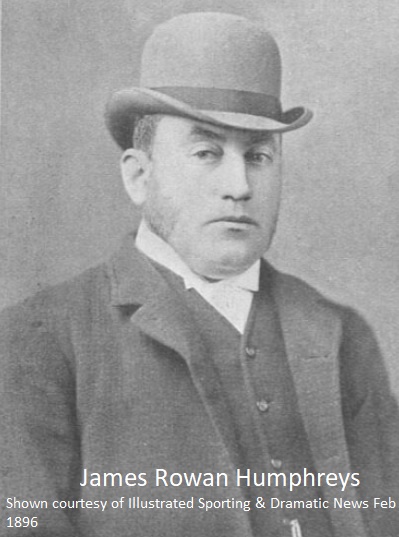
1888 Manchester November Handicap at Manchester CLAYMORE (20/1) owned by Lord Howe, trained by James Humphreys and ridden by Fred Allsopp
1889 Great Northamptonshire Stakes at Northampton CLAYMORE (4/1) owned by Lord Howe, trained by James Humphreys and ridden by Fred Allsopp
1889 Doncaster Cup CLAYMORE (11/10 fav) owned by 3rd Earl Howe, trained by James Humphreys and ridden by Fred Webb
1892 Manchester November Handicap £1375 at Manchester PADDY (100/7) owned by Sir John Thursby, trained by James Humphreys and ridden by George Gough
1893 Wakefield Lawn Stakes at Northampton FLORENTIA (3/1) owned and trained by James Humphreys and ridden by Joe Calder
1893 Pytchley Handicap at Northampton CONVENT (6/4 fav) owned by Mr Hermon-Hodges, trained by James Humphreys and ridden by Fred Allsopp
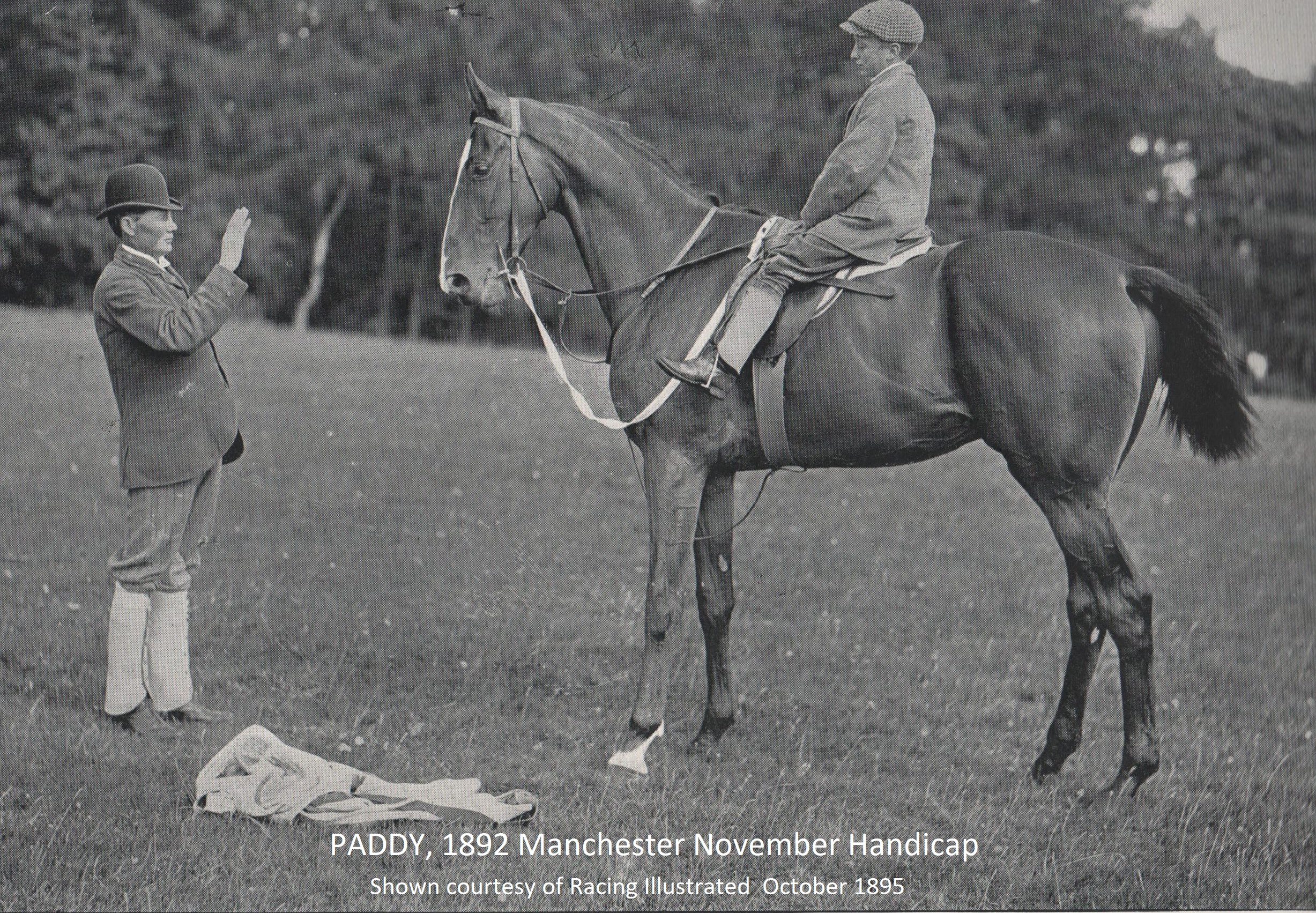
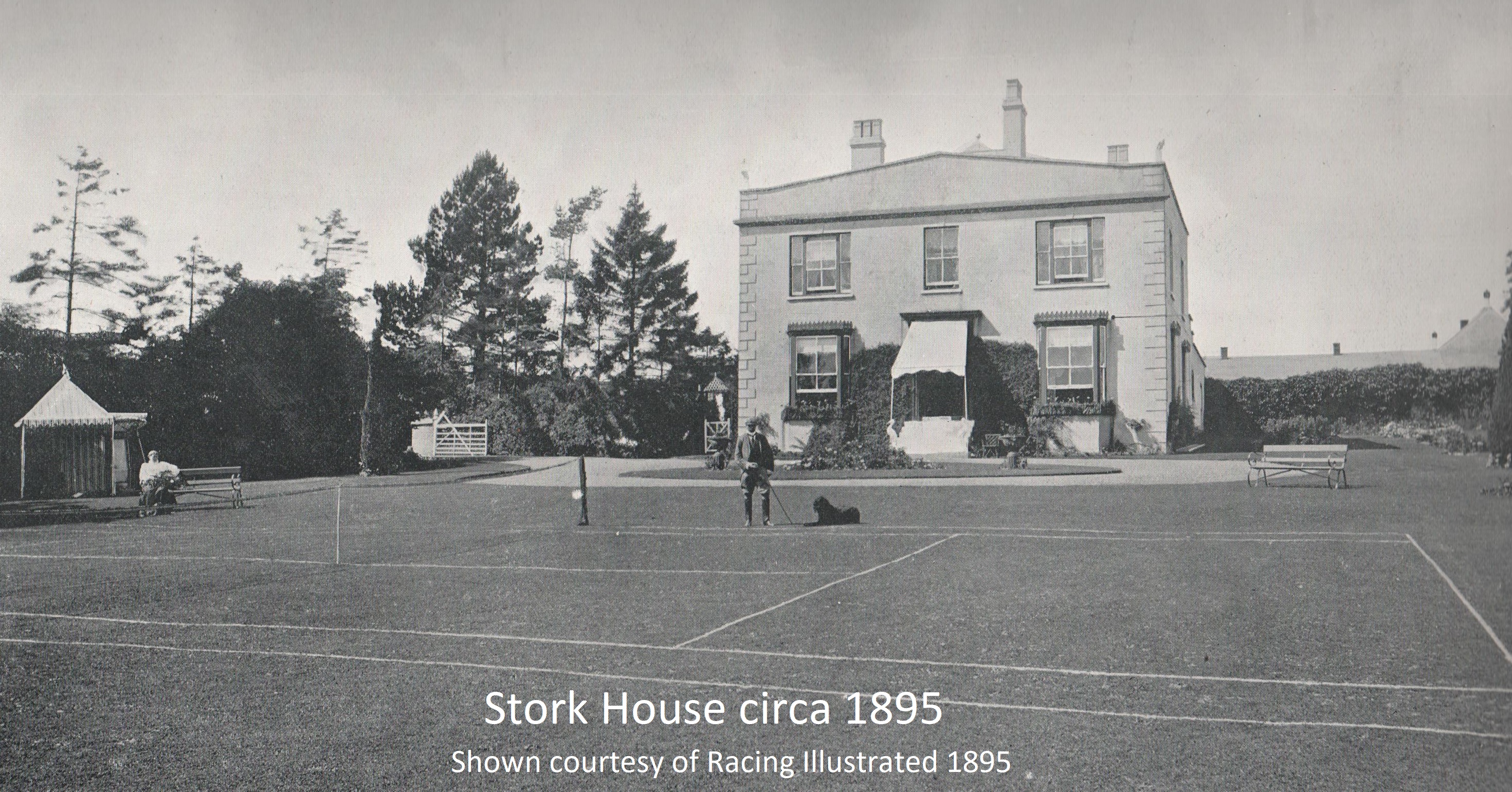
1894 Rothschild Plate at Windsor BOOBY TRAP (2/1 fav) owned by Mr S Platt, trained by James Humphreys and ridden by Joe Calder
1894 Eton Handicap at Windsor QUICKFOOT (11/2) owned and trained by James Humphreys and ridden by Joe Calder
1895 Rothschild Plate at Northampton THE TARTAR (1/33 fav) owned by Sir John Thursby, trained by James Humphreys and ridden by Walter Bradford
1895 Sir Crispin Handicap at Northampton ROULETTE (9/2 fav) owned by W Blake, trained by James Humphreys and ridden by Fred Allsopp
1895 Brighthelmstone Plate at Brighton THE TARTAR (15/100 fav) owned by Sir John Thursby, trained by James Humphreys and ridden by Fred Rickaby
1895 Carlton Plate at Manchester THE TARTAR (11/8 fav) owned by Sir John Thursby, trained by James Humphreys and ridden by Joe Calder
November 1896-1912 Harry Dawson Bates
Harry Dawson Bates, son of jockey and ace Middleham trainer Fred Bates, followed his father's footsteps into the training ranks, and even occupied Stork House where his father had previously trained in the early years of his career. Fred had ridden for the Middleham trainer Tom Dawson, part of the famous Dawson family, which included the legendary trainer Matt Dawson, so it was no surprise when Fred decided to include Dawson in his son's names. In March 1894 Harry married Edith Peck, eldest daughter of trainer Robert Peck of Howbury Hall, at the quaint little church at Reynolds. In a nice touch the bridesmaids, Miss Lillian Peck, Bride's sister, Miss Evelyn Peck, Bride's cousin, Miss Daniells and Miss McKenzie, were dressed in the racing colours of Robert Peck and Fred Bates, white bengaline silk and pale blue velvet. Harry was a keen follower of the Old Berks Hounds and also a very useful shot. One of his earliest successes, as he began to make a name for himself, was Little Red Rat who won a number of races in 1897 and 1898. Amongst the best known horses he trained were Thunderbolt, Mowbray, Pastmaster, Furze Bush, Clipstone and Wild Night Again. Although he did not achieve any Classic victories, he was very well respected in Lambourn and beyond, and could boast the owners Lord Petre, Mr F Hardy,Mr E Polehampton, Mr Nickalls, Mr E Carr and Mr Frisby throughout his training career. Harry died in a London nursing home on 3rd September 1925 and was survived by his wife Edith.
1896 De Trafford Handicap at Manchester CLIPSTONE (7/1) owned by Mr R Crest, trained by Harry Bates and ridden by Robinson
1897 Hampton Court Handicap at Hurst Park CLIPSTONE (9/4 fav) owned by Mr R Crest, trained by Harry Bates and ridden by Fagan
1902 Beaufort Handicap at Manchester WILD NIGHT AGAIN (10/1) owned by Mr F Hardy, trained by Harry Bates and ridden by Hardy
1903 Harewood Handicap at York WILD NIGHT AGAIN (5/2 fav) owned by Mr F Hardy, trained by Harry Bates and ridden by Otto Madden
1904 Prince Edward Handicap at Manchester THUNDERBOLT (8/10 owned by Mr E H Polehampton, trained by Harry Bates and ridden by Otto Madden
1905 Old Newton Cup at Haydock Park THUNDERBOLT (100/30) owned by Mr E H Polehampton, trained by Harry Bates and ridden by Danny Maher
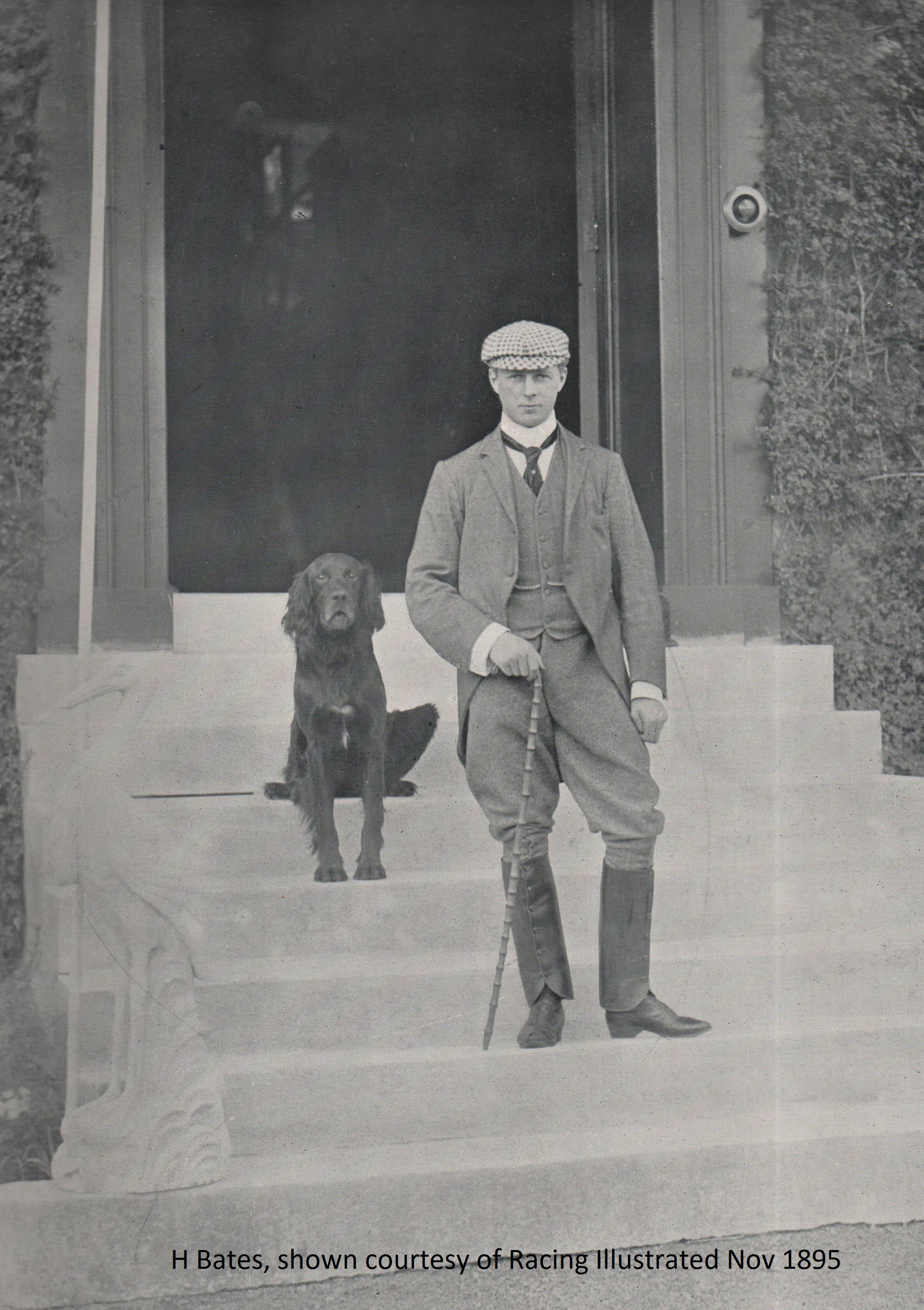
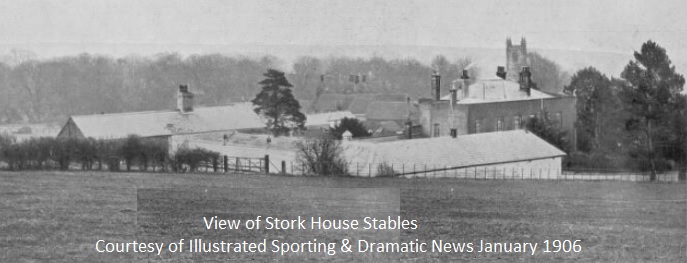
January 1913-March 1915 Richard Skerrett Golding
Richard Skerrett Golding trained over jumps in Ireland in the early 1900s, but he successfully applied for a Flat licence, leasing Stork House in January 1913. By 1914 he was training jumpers as well, and saddling a jumper as his last winner in 1915, before he left Stork House by March 1915.
April 1915-April 1919 Sir William Nelson, William Parke Cullen, Sir Charles Nugent
In April 1915 Stork House stables were purchased by Sir William Nelson, accompanied by his trainer William Parke Cullen. Sir William Nelson, created a Baronet in 1912, was a prominent shipowner and Chairman of the Nelson Line (Liverpool Ltd) and Nelson Steam Navigation. Willie Cullen, born in Galway in 1861, rode his first winner in 1879, famously partnering 3 Galway Plate winners. He trained at Epsom for a period before joining Nelson at Stork House, but only remained at Stork House until Autumn 1915, sending out just 3 winners. After Cullen departed, Nelson installed William Mullen to take charge of his 15 Flat horses, but he only enjoyed one winner and was replaced in 1916 by Sir Charles Nugent. In April 1919 Nelson relocated to Whatcombe, and was replaced by Captain Ossie Bell. Sir William Nelson died at his London residence on Friday 7th July 1922 aged 71 and was succeeded by his eldest son, James Hope Nelson. Captain Bell also trained at Delamere Stables and continued to use it as an overflow yard right up until 1932.
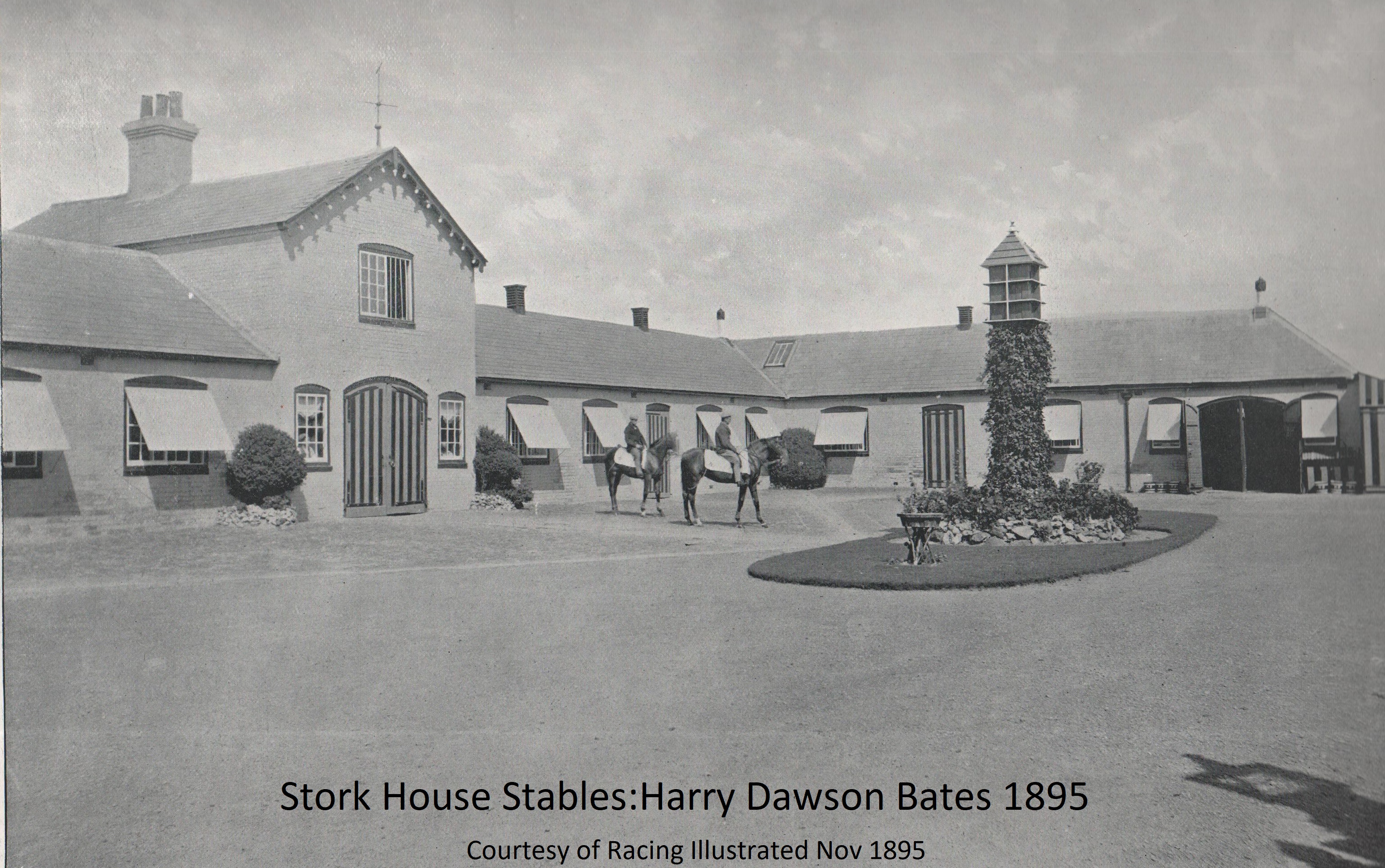
1915 Vyner Handicap at Hurst Park LONGTOWN (100/7) owned by Sir William Nelson, trained by Cullen and ridden by Steve Donoghue
April 1919-1947 Captain Ossie Bell
Captain Oswald Marmaduke Dalby Bell was born in Australia and had a passion for horses and ponies. He travelled to India and was famous for importing two ponies from his native homeland to India, Idle Bell and First Bell, both winners of the Lucknow Civil Service Cup and Eclipse Pony Stakes in Calcutta. He then travelled to England where he became an extremely successful racehorse trainer, sending out scores of winners from his Stork House Stables, including 1928 Epsom Derby winner Felstead (SR 1923) at 33/1. Felstead did not show a great deal as a 2-year-old, but won a Newbury maiden at 3 and then performed with credit in the 2000 Guineas, finishing sixth behind Flamingo (SR 1969). It was only when he moved up a distance that he began to show his true ability, winning the Davis Stakes at Hurst Park, before winning the Derby.
Ossie, who also used the Delamere House Stables in Lambourn as a second yard between 1919 and 1932, specialized in training sprinters, notching his second Royal Ascot success in the 1922 King Stand Stakes with King Sol ridden by champion jockey Steve Donoghue., having won the 1919 Queen Alexandra Stakes with St Eloi partnered by Brownie Carslake. In all he trained 11 Royal Ascot winners, 7 seconds, 11 third placed horses, earning 85th place on the all-time Royal Ascot Trainers list compiled in 2022. In 1922 and 1923 Ossie trained Flint Jack, owned by G Plevin, to win back-to-back Ebor's at York. Indeed, York was a particularly favourable racecourse for Ossie, winning the Nunthorpe on no less than 4 occasions, firstly in 1926 with Highborn II, who repeated that success the next year, then again in 1933 with Concerto, and finally in 1937 with Ipsden, the first 3 wins were for loyal owner and friend Sir Hugo Cunliffe-Owen, the last for Lady Ludlow. Harry Wragg became stable jockey in 1928 and the pair enjoyed much success, not only winning the 1928 Derby, but later the 1000 Guineas and Oaks. In 1934 Ossie married Lady Beaumont, widow of Sir Sammy Beaumont, nicknamed Rubber, the sporting Baronet who died in Lambourn on 1st October 1933. Ossie achieved further Classic success in 1938 when Rockfel (SR 2063) won the 1000 Guineas and followed up the victory in the Oaks. Earlier in the season the filly had won the inaugural Princess Elizabeth Stakes at Epsom. The July Cup at Newmarket was another sprint race which Ossie won on a number of occasions, notably in 1927 with Highborn II, in 1932 with Concerto, and finally in 1941 with Comatas. Whether or not Ossie felt his Classic victories gave him most pleasure is unknown, but he must surely have celebrated his capture of the 1941 Ascot Gold Cup with Finis as one of the highlights of his glittering career. Captain Bell's best year, in monetary terms, was 1938 when 32 winners netted £33.402, while his best season by number of winners was his Derby winning year when he achieved 50 winners earning £23,499. He retired at the end of the 1947 season and died on 25th June 1949.
1919 Queen Alexandra Stakes at Royal Ascot ST ELOI (6/4) owned by P Heybourne, trained by Ossie Bell and ridden by Brownie Carslake
1922 King's Stand Stakes at Royal Ascot KING SOL (9/2) owned by J C Galstaun, trained by Ossie Bell and ridden by Steve Donoghue
1922 Goodwood Stakes FLINT JACK (3/1 fav) owned by G Plevin, trained by Ossie Bell and ridden by G Smith
1923 Ebor Handicap at York FLINT JACK (10/1) owned by G Plevin, trained by Ossie Bell and ridden by G Smith
1924 Montrose Handicap at Ayr SCHERZO (9/4 fav) owned by Captain Fielden, trained by Ossie Bell and ridden by G Walsh
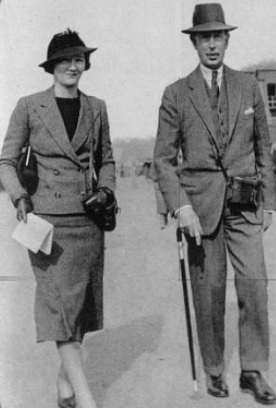
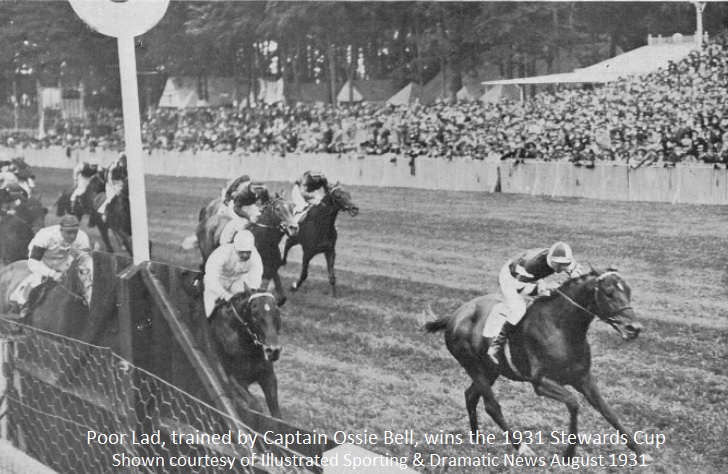
1925 Melrose Handicap at York SCHERZO (9/4 fav) owned by Captain Fielden, trained by Ossie Bell and ridden by Charlie Elliott
1926 Nunthorpe Stakes at York HIGHBORN II (30/100 fav) owned by Sir Hugo Cunliffe-Owen, trained by Ossie Bell and ridden by Joe Childs
1927 Royal Hunt Cup at Royal Ascot SONGE (100/6) owned by Lord Michelham, trained by Ossie Bell and ridden by Harry Wragg
1927 Cork & Orrery at Royal Ascot HIGHBORN II (Evens fav) owned by Sir Hugo Cunliffe-Owen, trained by Ossie Bell and ridden by Harry Beasley
1927 July Cup at Newmarket HIGHBORN II (4/9 fav) owned by Sir Hugo Cunliffe-Owen, trained by Ossie Bell and ridden by Harry Beasley
1927 Nunthorpe Stakes at York HIGHBORN II (13/8 fav) owned by Sir Hugo Cunliffe-Owen, trained by Ossie Bell and ridden by Joe Childs
1928 Davis Stakes at Hurst Park FELSTEAD (7/4 fav) owned by Sir Hugo Cunliffe-Owen, trained by Ossie Bell and ridden by Harry Wragg
1928 Epsom Derby £11,605 at Epsom FELSTEAD (SR 1923) 33/1 owned by Sir Hugo Cunliffe-Owen, trained by Ossie Bell and ridden by Harry Wragg
1931 Stewards Cup at Goodwood POOR LAD (9/1) owned by Sir Hugo Cunliffe-Owen, trained by Ossie Bell and ridden by S Wragg
1932 Waterbeach Handicap at Newmarket POOR LAD (5/2 fav) owned by Sir Hugo Cunliffe-Owen, trained by Ossie Bell and ridden by Harry Wragg
1932 Wokingham at Royal Ascot CONCERTO (9/2) owned by Sir Hugo Cunliffe-Owen, trained by Ossie Bell and ridden by Harry Wragg
1932 July Cup at Newmarket CONCERTO (11/2) owned by Sir Hugo Cunliffe-Owen, trained by Ossie Bell and ridden by Harry Wragg
1933 Wokingham at Royal Ascot CONCERTO (4/1 fav) owned by Sir Hugo Cunliffe-Owen, trained by Ossie Bell and ridden by Harry Wragg
1933 Nunthorpe Stakes at York CONCERTO (6/1) owned by Sir Hugo Cunliffe-Owen, trained by Ossie Bell and ridden by Brownie Carslake
1935 Stewards Cup at Goodwood GREENORE (7/1) owned by Lady Ludlow, trained by Ossie Bell and ridden by S Wragg
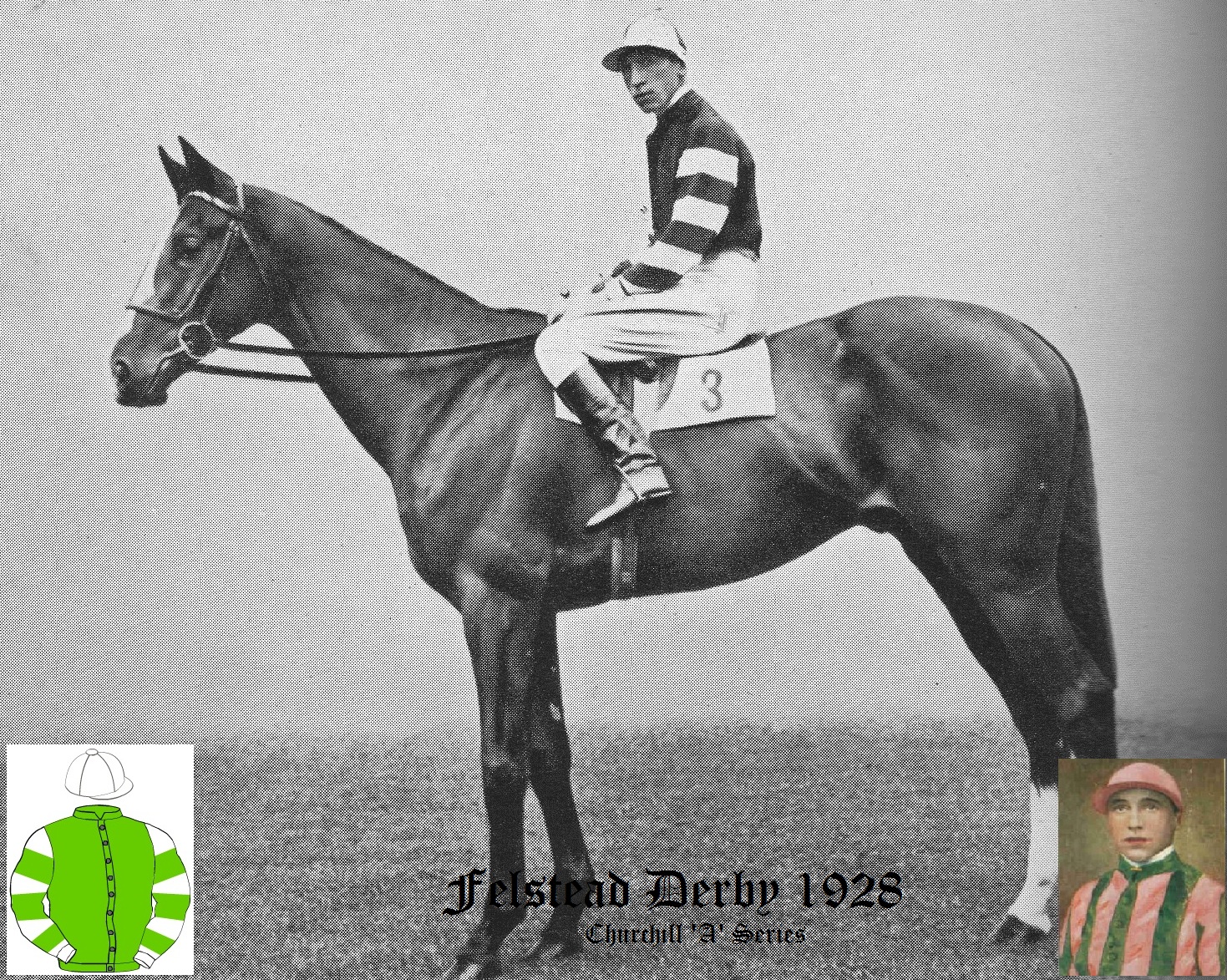
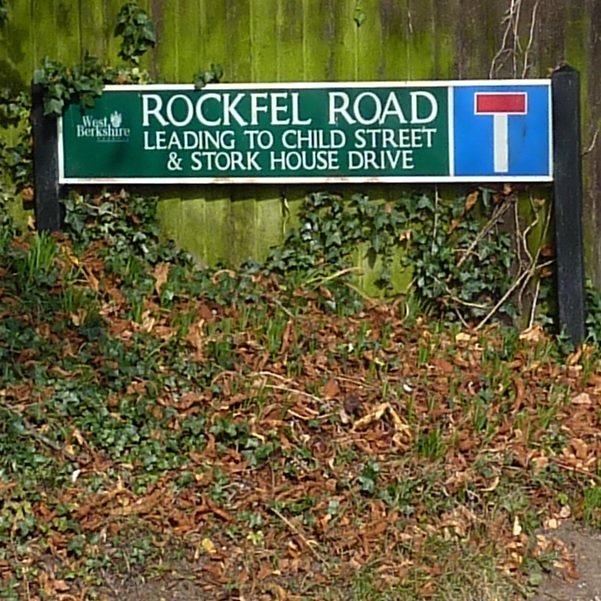
1935 Ayr Gold Cup GREENORE (5/1) owned by Sir Hugo Cunliffe-Owen, trained by Ossie Bell and ridden by S Wragg
1936 Fern Hill Stakes at Royal Ascot IPSDEN (11/2) owned by Lady Ludlow, trained by Ossie Bell and ridden by S Wragg
1936 Stewards Plate at Kempton IPSDEN (9/1) owned by Lady Ludlow, trained by Ossie Bell and ridden by S Wragg
1937 Chesterfield Cup at Glorious Goodwood FINALIST (13/2) owned by Lady Ralli, trained by Ossie Bell and ridden by Harry Wragg
1937 Nassau Stakes at Glorious Goodwood FIRST FLIGHT (11/2) owned by Lord Londonderry, trained by Ossie Bell and ridden by Harry Wragg
1937 Nunthorpe Stakes at York IPSDEN (7/1) owned by Lady Ludlow, trained by Ossie Bell and ridden by S Wragg
1937 Great Eastern Handicap at Newmarket IPSDEN (7/1) owned by Lady Ludlow, trained by Ossie Bell and ridden by S Wragg
1938 Inaugural running of Princess Elizabeth Stakes at Epsom ROCKFEL (5/4 fav) owned by Sir Hugo Cunliffe-Owen, trained by Ossie Bell and ridden by Sam Wragg
1938 1000 Guineas £7500 at Newmarket ROCKFEL (SR 2063) 8/1 owned by Sir Hugo Cunliffe-Owen, trained by Ossie Bell and ridden by Sam Wragg
1938 Epsom Oaks £7320 at Epsom ROCKFEL (SR 2063) 3/1 owned by Sir Hugo Cunliffe-Owen, trained by Ossie Bell and ridden by Harry Wragg
1938 Champion Stakes at Newmarket ROCKFEL (2/1) owned by Sir Hugo Cunliffe-Owen, trained by Ossie Bell and ridden by Harry Wragg
1939 Britannia Stakes at Royal Ascot FOLETTA (20/1) owned by F Neilson, trained by Ossie Bell and ridden by Harry Wragg
1941 Gold Cup at Royal Ascot FINIS (4/1) owned by Sir Hugo Cunliffe-Owen, trained by Ossie Bell and ridden by Harry Wragg
1941 July Cup at Newmarket COMATAS (13/2) owned by Miss K Farrar, trained by Ossie Bell and ridden by Billy Nevett
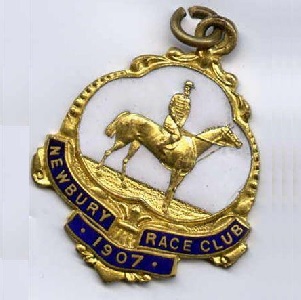
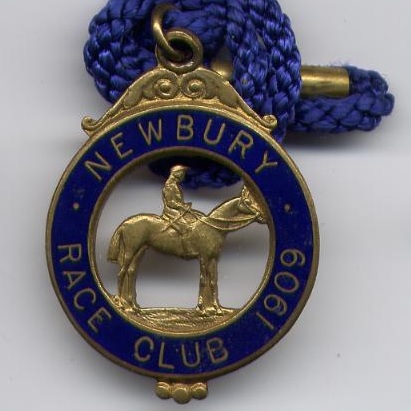
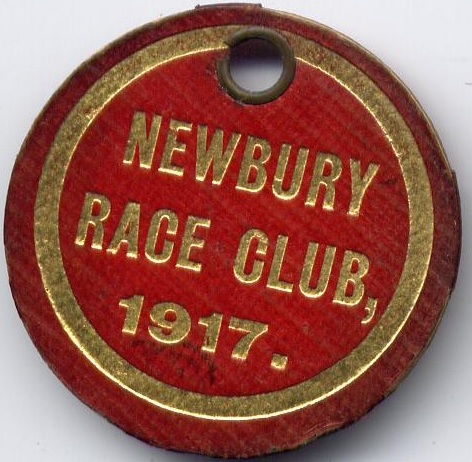
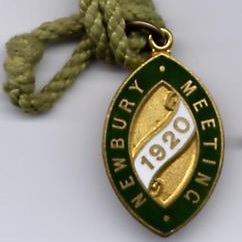
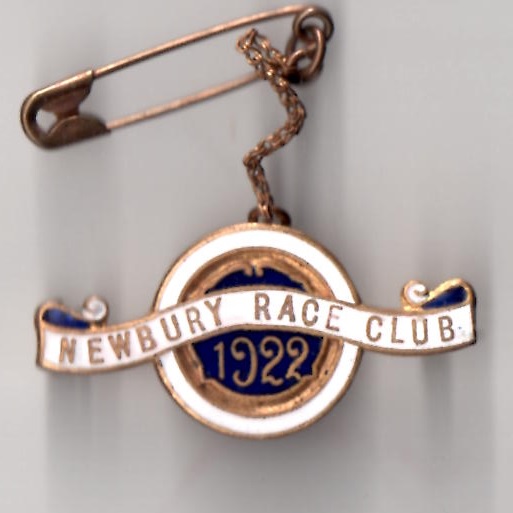
1947-1957 Commander J W W Bisgood
John Wilfred Weare Bisgood was born on 28th September 1900 and began active service in the First World War on 7th May 1917. He reached the rank of Lieutenant-Commander in the Royal Navy before retiring from service life to become a racehorse trainer. He saddled 17 runners at Royal Ascot meetings between 1937 and 1953 without achieving a victory; his best placed horses were Signalman, who was second in the 1948 Duke of Edinburgh Stakes, then known as the Bessborough Stakes, and fourth place with Balcony Scene in the 1946 Queen Anne Stakes. Signalman had won the 1946 Chesterfield Stakes at Glorious Goodwood, when trained by Harvey Leader in Newmarket, joining Bisgood in Lambourn later in its career. In 1947 he transferred his horses to Stork House stables, training for Colonel W Stirling, Colonel R Curtis, Major G S L Whitelaw and Mr H Cohen. In 1947 he won the Rookery Stakes at Sandown with Sixteen Bells and the 1951 Twickenham Stakes at Sandown with Signalman, but arguably his most high-profile winner was Veuillin for Mr R Costain in the 1951 Goodwood Stakes. He departed Stork House at the end of the 1957 season.
1947 Rookery Stakes at Sandown SIXTEEN BELLS (100/8) trained by Bisgood and ridden by Michael Beary
1949 Southover Plate at Lewes SIGNALMAN (1/3 fav) owned by Major G S L Whitelaw, trained by Bisgood and ridden by Gordon Richards
1949 Carbery Handicap at Edinburgh SIGNALMAN (5/2) owned by Major G S L Whitelaw, trained by Bisgood and ridden by J Caldwell
1949 Queen Bess Plate at Birmingham LOVELY SURPRISE (100/8) trained by Bisgood and ridden by Ken Gethin
1949 Preston Plate at Haydock SIGNALMAN (1/8 fav) owned by Major G S L Whitelaw, trained by Bisgood and ridden by S Wragg
1951 Twickenham Stakes at Sandown SIGNALMAN (100/30) owned by Major G S L Whitelaw, trained by Bisgood and ridden by Charlie Elliott
1951 Goodwood Stakes VEUILLIN (8/1) owned by R R Costain, trained by Bisgood and ridden by Manny Mercer
1953 Shrewsbury Stakes at Wolverhamton HVC (4/6 fav) trained by Bisgood and ridden by Ken Gethin
1954 Hop Leaf Handicap at Windsor TORBANGO (4/1) owned by Colonel R Curtis, trained by Bisgood and ridden by D Forte
1954 Abingdon Handicap at Newbury TORBANGO (13/2) owned by Colonel R Curtis, trained by Bisgood and ridden by D Forte
1954 Clifton Handicap at Nottingham TORBANGO (5/4 fav) owned by Colonel R Curtis, trained by Bisgood and ridden by Wally Swinburn
1969-1971 David Cecil
David Cecil, born in Aberdeen on 11th January 1943 to Lt-Colonel Henry Kerr Auchmuty Cecil and Rohays Cecil. He was the twin brother of the more famous racehorse trainer Henry Cecil who was born 10 minutes before him. Their father was killed in action in the Second World War shortly before the twins were born, and their mother later married Captain Cecil Boyd-Rochfort who was able to give both boys a firm grounding in how to train racehorses successfully. David began training racehorses at Stork House stables in 1969 aged 26, celebrating his first winner, Sky Belle, at Edinburgh in the Liberton Stakes in July 1969. Although he did not train any winners of high-profile races, he did saddle a number of winners on minor racecourses during the 3 years he was at Stork House. David married three times, fathering 4 children from his first two marriages, but he had to sell Stork House as part of his divorce settlement of his first marriage. He experienced periods of alcoholism and was diagnosed with cancer of the liver and pancreas in March 2000 and died a few months later aged 57.
1969 Liberton Stakes at Edinburgh SKY BELLE (5/4) owned by I G Collier, trained by David Cecil and ridden by Johnny Seagrave
1969 Weyhill Stakes at Salisbury GAY SAMANTHA (100/9) trained by David Cecil and ridden by Geoff Lewis
1970 Burneston Fillies Stakes at Ripon PETIT FOURS (10/1) owned by J Burnett, trained by David Cecil and ridden by Willie Carson
1971 Beach Stakes at Brighton OUR MANNY (33/1) owned by C Gaventa, trained by David Cecil and ridden by Paul Cook
1972-1975 H Williams
H Williams began training as a dual-purpose trainer at Stork House in 1972 and continued for the next 4 years, although his wins were predominantly in minor events. However, he did have one claim to fame during his time in Lambourn, for he was responsible for Rag Trade as a 7-year-old when the chaser had not won any races in his career to date. Rag Trade, by Menelek out of The Rage, was bred by Ian Williams, son of Evan Morgan Williams who partnered Royal Mail to Grand National success in 1937, and sent to Stork House. He won the 1973 Sapling Novices Chase at Ascot when ridden by Bob Champion, who also rode a Grand National winner, Aldaniti, in the famous 1981 Grand National. Williams thought him good enough to contest the National Hunt Chase at the Cheltenham Festival, where he was to be partnered by owner Ian, but on the day he was withdrawn, the race going to Foreman 11/2, trained by Harry Thomson-Jones and ridden by Bill Shand-Kydd. In 1974 Rag Trade was transferred to the stables of George Fairbairn and won the Langley Chase at Hexham, partnered by Michael Dickinson. In 1975 Rag Trade was purchased at the Doncaster sales for 18,000 guineas and sent to be trained by Arthur Pitt for a stab at the 1975 Grand National, finishing tenth, and last, ridden by John Francome. Later that year he won the Midlands Grand National and Uttoxeter. He won the 1976 Welsh Grand National prior to winning the 1976 Aintree Grand National at 14/1, defeating the legendary Red Rum in the process. Unfortunately, in 1978, when 8/1 favourite for the National and partnered by Jonjo O'Neill, he pulled up lame after the 21st fence and was euthanized. H Williams departed Stork House in 1975.
1973 Beau Brummell Stakes at Brighton GOLDEN MARK (12/1) owned by Ian Williams, trained by H Williams and ridden by Willie Carson
1973 Sapling Novices Chase at Ascot RAG TRADE (9/1) owned by Ian Williams, trained by H Williams and ridden by Bob Champion
1974 Bloxwich Handicap at Wolverhampton FRIGID FRED (7/4 fav) owned by Ian Williams, trained by H Williams and ridden by Frank Morby
December 1975-1979 Tom C Marshall
Tom Marshall, son of legendary trainer Bill Marshall, who was champion trainer in Barbados for a number of years, was granted a trainers licence in December 1975 when he was aged just 25, having spent the previous 5 years as assistant to his father. Tom leased Stork House Stables, beginning with a string of 6 hurdlers and six 2-year-olds ready to run on the Flat. Although he won few high-profile races, he turned out a number of winners each year at tracks as far afield as Nottingham and Hamilton. He won a sequence of hurdle races with Even Par in 1978, and the Prince of Wales Stakes at York in 1979 with his own horse Blue Courtier. Tom departed Stork House in 1979, gave up training altogether in 1983 and was able to transfer some of his horses to Mark Usher who had successfully gained his licence in November 1983 and sent out his first runners in early 1984. Tom then launched a racing syndicate which enjoyed particular success with Portogon, who won 11 races and over £60,000 in prize money between 1983 and 1985.
1978 Nottingham Merit 3-y-o Hurdle EVEN PAR (13/8) trained by Tom Marshall and ridden by Colin Brown
1979 Prince of Wales Stakes at York BLUE COURTIER (10/1) owned and trained by Tom Marshall and ridden by Dennis McKay
1979 Motherwell Stakes at Hamilton BLUE COURTIER (4/9 fav) owned and trained by Tom Marshall and ridden by Dennis McKay
1979 Nutherglen Stakes at Hamilton ROGAIRIO (5/2) owned and trained by Tom Marshall and ridden by Dennis McKay
1979-1980 Marshall Taffy Salaman
Marshalla Taffy Salaman, born in Cardiff on 14th March 1945, was the son of an Arab who worked in Wales which is how Marshalla earned the nickname Taffy. Despite never having ridden before, Taffy joined the stables of Ryan Price in 1960, but his apprenticeship then transferred to Hednesford, Staffordshire where Earl Jones trained. He rode his first horse at Chepstow in 1962, but did not partner his first winner, Milky Way at Taunton, until 3rd February 1968. Arguably his most high-profile winner as a jockey was aboard Dulwich in the 1974 Grand Annual Chase at Cheltenham for trainer Colin Davies having already partnered the same horse in 4 previous wins. While Dulwich repeated the win in the 1976 Grand Annual Chase, this time he was partnered by Bob Davies. Taffy had his first ride in the Grand National in 1974 where Sixer was brought down at the fourth fence behind legendary winner Red Rum, and by 1975 he had launched his training career in Wales. The most famous horse he was associated with as a trainer was Churchtown Boy, saddling him to success in the 1977 Topham Trophy at Aintree having ridden him in the 1976 Grand National when finishing 11th at 33/1 behind Rag Trade. He moved his training enterprise to Lambourn in March 1977, saddling Churchtown Boy in the 1977 Grand National after the Topham Trophy success. That year the horse finished 2nd at 20/1 behind Red Rum when ridden by Martin Blackshaw. By 1978, and still in Lambourn, he was training for the likes of singer Dorothy Squires and, once again, ran Churchtown Boy (14/1) in the Grand National piloted by Martin Blackshaw, but he fell at the 15th fence. In 1979 Taffy Salaman was training at Stork House Stables and decided to dust down his riding boots and partner Churchtown Boy (25/1) in the Grand National, but he fell at the 22nd, Bechers Brook on the second circuit. Still at Stork House in 1980 he sent out Churchtown Boy for the 5th time, this time he was ridden by Andy Turnell at 50/1 and fell at the 3rd. Although his training career had its ups and downs, losing his licence on occasions, and being frequently fined by the Stewards, he reverted to assistant trainer in 1982, but regained his licence and finally called a halt to his training career in late 2009.
1977 Topham Trophy at Aintree CHURCHTOWN BOY (9/1) owned by B Arnold, trained by M Salaman and ridden by C Read
June 1990-1992 Terry Casey
William Terence Casey, born on 2nd June 1945 in Downings, County Donegal, was destined to become a jockey and then go on to train. Schooling, of the educational kind, was never a high priority for Terry, but schooling horses for trainer Aubrey Brabazon was much more to his liking. He joined Brabazon aged 15 and then went on to ride for Richard Dunwoody's father George, but he only managed half a dozen winners for George, later working for Bobby Patton in Monaghan, and began the long road to become a trainer, although he did add a further 40 winners to his CV. Initially, he spent three years with Paddy Mullins, and then crossed the Irish sea to join Frank Gilman where he rode Grittar, long before the horse was successful in the Grand National. He also got married, but less than 6 months later his wife tragically choked to death, leaving Terry devastated. He returned to Ireland, launched his training career at The Curragh, and sent out his first winner, Town Special owned by Mr Frank Warren, at Clonmel in September 1983.from his Ascon Stables in Kilclammon, He then returned to England when invited to train for John Upson at Adstone, near Towcester, training Glenrue to win the Topham Trophy, then known as the Whitbread Trophy Chase, and saddling Over the Road to win the 1988 National Hunt Chase at the Cheltenham Festival, although his 1989-90 season at Thorpe Mandeville Manor, Oxfordshire was disappointing, recording only 4 winners all season, and when his 3-year contract expired he made the journey to Lambourn in June 1990, occupying Stork House Stables. He remained at Stork House before moving down the road to Newlands, Upper Lambourn, then he, and his sponsors, had to sell up for financial reasons. Luckily, he saw an advert to become private trainer for businessman Andrew Wates in Dorking, Essex and was the only applicant, and while there he encountered a horse called Rough Quest. The horse won the 1995 Ritz Club Handicap Chase at Cheltenham, and went on to land the Castlemartin Stud Chase at Punchestown. He was unlucky in the Hennessy Gold Cup at Newbury, and uncharacteristically fell at Leopardstown in the MrCain Chase at Leopardstown, but Casey was not deterred, mapping out a road to the Grand National for Rough Quest. That path began with victory in the Racing Post Chase at Kempton in February 1996, followed by an encouraging second in the 1996 Cheltenham Gold Cup at 12/1, beaten 4 lengths by Imperial Call. He then went to Aintree where he was ridden by Mick Fitzgerald, and was made the 7/1 favourite. He won by 1 1/4 lengths from Encore Un Peu, with Superior Finish a further 16 lengths back in third. Terry continued to train until 1999, chalking up his final winner, Splendid Thyne, in the Spa Hurdle. Shortly afterwards he was diagnosed with throat cancer and, although it was thought treatment had worked, the disease returned in 2001 and he died on 24th July 2001 in Somerset aged 56.
1986 Topham Trophy at Aintree GLENRUE (20/1) owned by H McClelland, trained by Terry Casey and ridden by Richard Dunwoody
1988 National Hunt Chase at Cheltenham OVER THE ROAD (10/1) owned by John Upson, trained by Terry Casey and ridden by Tom Costello
1995 Ritz Club Handicap Chase at Cheltenham ROUGH QUEST (16/1) owned by Andrew Wates, trained by Terry Casey and ridden by Mick Fitzgerald
1995 Castlemartin Stud Chase at Punchestown ROUGH QUEST (4/1) owned by Andrew Wates, trained by Terry Casey and ridden by Mick Fitzgerald
1996 Racing Post Chase at Kempton ROUGH QUEST (3/1 fav) owned by Andrew Wates, trained by Terry Casey and ridden by Richard Dunwoody
1996 Grand National at Aintree ROUGH QUEST (7/1 fav) owned by Andrew Wates, trained by Terry Casey and ridden by Mick Fitzgerald
1999 Spa Hurdle at Cheltenham SPLENDID THYNE (6/4 fav) owned by John Galvanoni, trained by Terry Casey and ridden by Warren Marston
1993-1995 Mrs J Jordan, A G Forster
When Terry Casey sold up, and departed for Dorking, Stork House was sold. It is thought that, initially Mrs J Jordan and trainer A G Forster occupied the premises, although eventually the property was sold to Mrs Merretta Jones.
1989-1999 Mr & Mrs Merretta Jones
In 1995 it is thought that Stork House was owned by Mrs Merretta Jones and her husband, although they might have owned it some time before that and leased it out. At that stage the magnificent house contained an elegant staircase brought from Lambourn Place where, rumour has it, it still contained a blood stain from a time when a maid at Lambourn Place was murdered. At some point Stork House and its surrounding land was sold to property developers, the House being subsequently demolished and the land built on.
ROCKFEL (1938 Oaks, 1000 Guineas, Champion Stakes)
KETTLEDRUM (1861 Epsom Derby Doncaster Cup, 2nd in 2000 Guineas & St Leger)
FELSTEAD (1928 Epsom Derby)
HIGHBORN II (1926, 1927 Nunthorpe Stakes, 1927 July Cup, Cork & Orrery)
CONCERTO (1932 July Cup, 1932, 1933 Wokingham, 1933 Nunthorpe Stakes)



